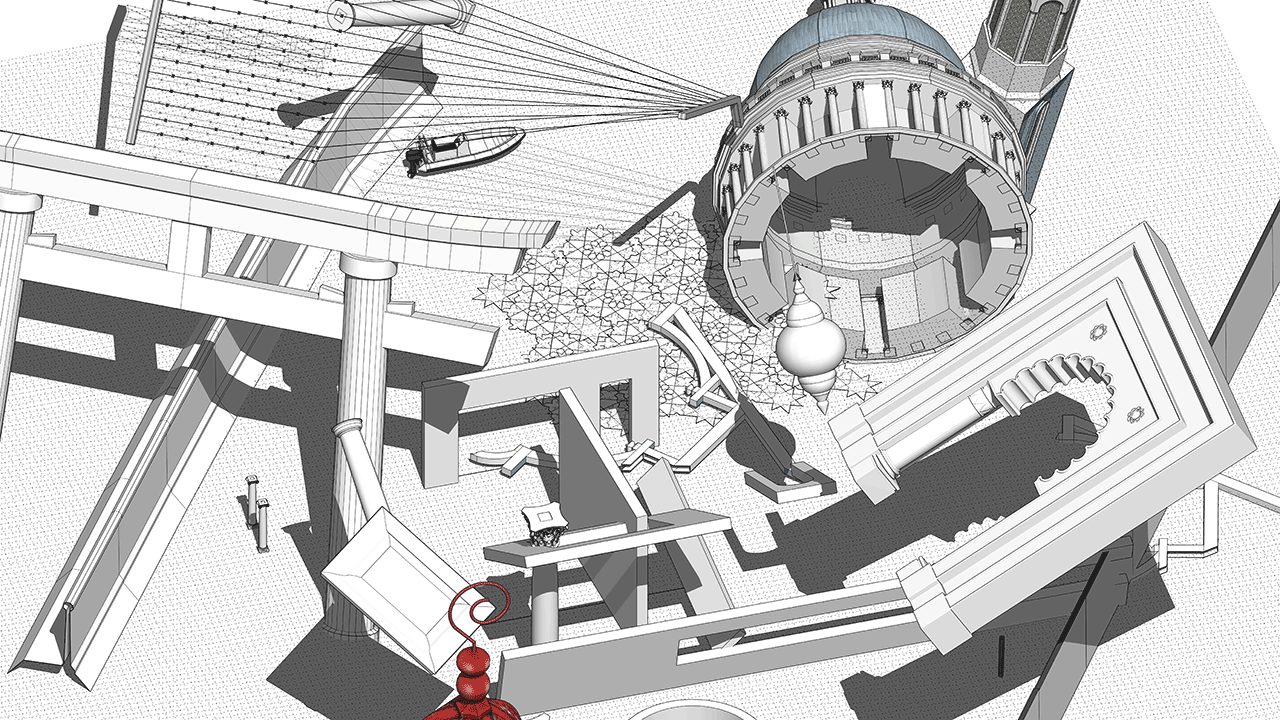
Discussion
What does it mean to talk about ‘region’ and ‘regional’ in relation to architecture? It used to mean a lot, and at face value it looked quite simple.
We can think of Leon Battista Alberti’s advice on the need to maintain a safe, well-appointed villa away from the grime and dangers of the city; the sumptuary laws of Jacobean England that sought to lock landowners and tenant farmers to their country estates; William Cobbett’s ‘Great Wen’, that festering urban sore threatening to spread its contamination.
For much of history the ‘region’ signified a clear locus of social, ethical and also quite distinctive architectural value. It was a ‘place’ – whether geographically real, theorized, or conjured in artistic and literary imagery - where authentic ‘regional’ culture was sustained and refreshed. It was the place where, in William Blake’s famous formulation, a world of innocence might be safeguarded against a world of experience.
This discourse nourished and spatially located the constellation of Arts and Crafts movements, it spurred the avant-garde artistic retreats and communes of the late 19th century, as well as the post-colonial ‘rediscovery’ of vernacular architecture and cultures across the globe in the 20th, ostensibly uncontaminated by the spread of global architectural technique. Region was the site of craft, the handmade, of indigenous wisdom, of the locally sourced.
But at the same time the region has been figured as the opposite: the site of backwardness, conformity and poor taste over against the richer culture and progressivism, the globally traded fashions and design materials of the capital. Formative on this way of thinking were Adolf Loos’ influential diatribes against regional museums full of dusty knick-knacks, and his endorsement of a new global machine-vernacular to replace the wastefulness of craft. And this sentiment effloresced out into the quick-sketched arrows of Le Corbusier’s 1933 Radiant City vision, where an incalculably vast area of regional dross would be swept away under the march of an architecture mass-produced to an international vision - a sentiment refreshed in Rem Koolhaas’ 2014 ‘Absorbing Modernity’ Biennale in Venice.
Despite their much-discussed opposition, the city and region have forever been intertwined, and given contemporary growth and technology they have become harder and harder to separate both locally and globally. As such, one might ask if contemporary ways in which we define and categorise the concentrated (urban) and dispersed (rural) are still valid? As recognized in Koolhaas’ newest MoMA exhibition, ‘Countryside, The Future’, we perhaps need to ask whether the rural has been ignored despite its pivotal role in the growth of our urban centres.
The current pandemic has surely precipitated the awakening of a new regional awareness for many people and populations. The last few months have witnessed the dramatic emptying out of metropolitan centres that were already in sharp decline, to the backdrop of a Populist political turn towards ever-increasing insularity and localism. Both have forced people to take a fresh look at the regions of their everyday experience, whether they like it or not, and to discover ‘there’…what? Bucolic idylls rich in the traditions of local craft? Volume built suburbia? The grimy industrial and commercial tracts wandered by the protagonists of Robinson in Space (1997)? Vast human-free hinterlands of automated farms and distribution centres? Landscapes of wildlife in resurgence? Dank containment cities of refugees in limbo, fled from their own blasted regions?
The pandemic, then, has raised questions of density and land use distribution and has prompted an opportunity to rethink the broader processes and benefits of urbanisation in relation to the urban/rural dialectic. It has radically problematized the concept of place at every scale, and has done so in ways that previously seemed unthinkable. It leads us to question not only where things need to happen, but also to consider which places might be needed and which might now become obsolete. In some ways it seems to suggest that place matters less than before. But we argue that the ‘where’ still matters and the region remains valid as an architectural proposition, as a sphere of thinking, imagining and acting.
Indeed, the region is perhaps even more complex, mercurial and pressing now than its earlier polemical formulations as centre-periphery, city-suburb or administration-colony could ever allow. The region is, perhaps, revitalised.
